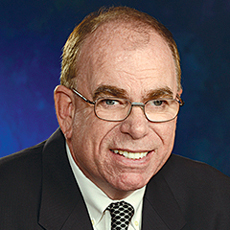

Many long-term care organizations now find themselves entering the strategic planning season.
It’s that special time when providers gather as much information about their communities and the market, while plotting the best possible course for the year — or years — ahead.
But even the most comprehensive data and strategizing can yield results that are far from optimal. Sometimes earnings projections turn out to be wildly optimistic. Sometimes market assumptions don’t pan out. Sometimes fate rolls an unexpected hand grenade under the tent. The list goes on.
For as the old Yiddish proverb reminds us, man plans and God laughs (“Der mensch tracht un Gott lacht.”).
That’s why it’s helpful to have access to a thought leader who’s in on the joke. Someone like Bob Kramer.
For more than a quarter century, he was CEO at the National Investment Center for Senior Housing and Care, an organization Kramer cofounded and still assists as a strategic advisor.
These days, he’s at Nexus Insights, another organization he launched. There, he helps clients redefine aging and reconsider aging services.
To suggest he knows a thing or two about where things are going would be extreme understatement.
In a recent NIC blog post, he challenged facilities to manage the hurdles ahead. For operators who want to plan well, his insights are golden. His piece cites six realities that are shaping the sector today, and will reshape the future of aging services:
1. The pandemic altered the way senior living works and ushered in the third generation of senior living.
2. The endemic staffing crisis will continue; providers will need to determine how to recruit and retain the best workers.
3. New customers want their lifespans to match their healthspan or wellspans. “We need an engagement view of aging and retirement shaped by growth and opportunity, not by deficits and decline,” Kramer wrote.
4. The industry must reframe the focus on health and healthcare; no more sick care.
5. Operators must harness data and analytics to transform the industry. In the future, Kramer said, market data will be coupled with personalized health, genomic, social determinants of health, lifestyle and psychographic data, and it will be aggregated by local market.
6. There will be a shift from fragmented, single-point healthcare solutions and technology applications to integrated, longitudinal solutions that can apply to general settings, diseases and payers.
If your organization’s strategic planning fails to consider any of these matters, here’s my suggestion: Please make sure they do.
John O’Connor is editorial director for McKnight’s.
Opinions expressed in McKnight’s Long-Term Care News columns are not necessarily those of McKnight’s.




